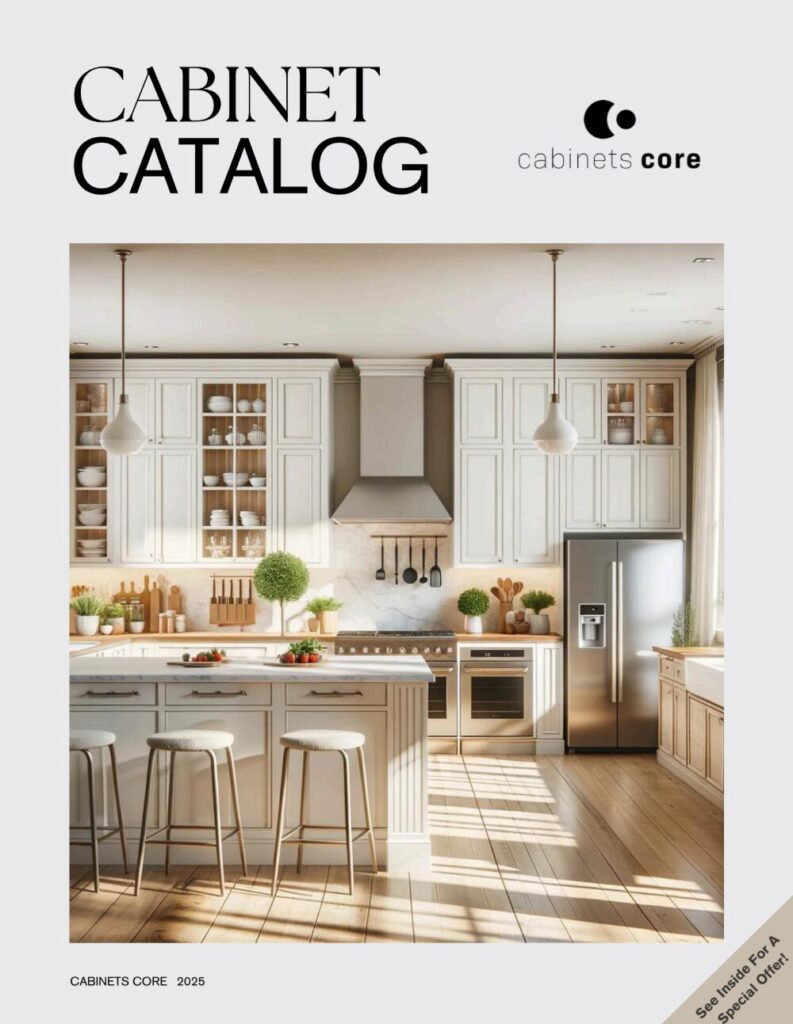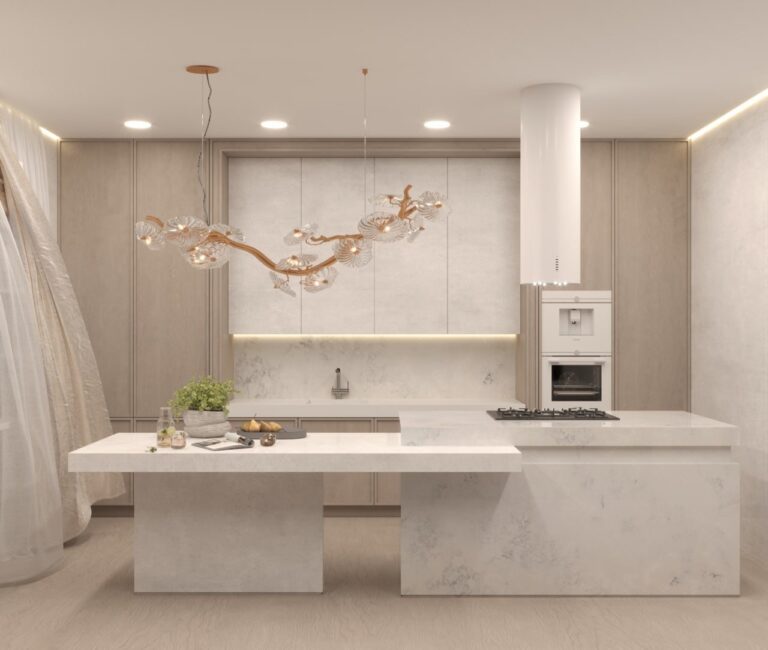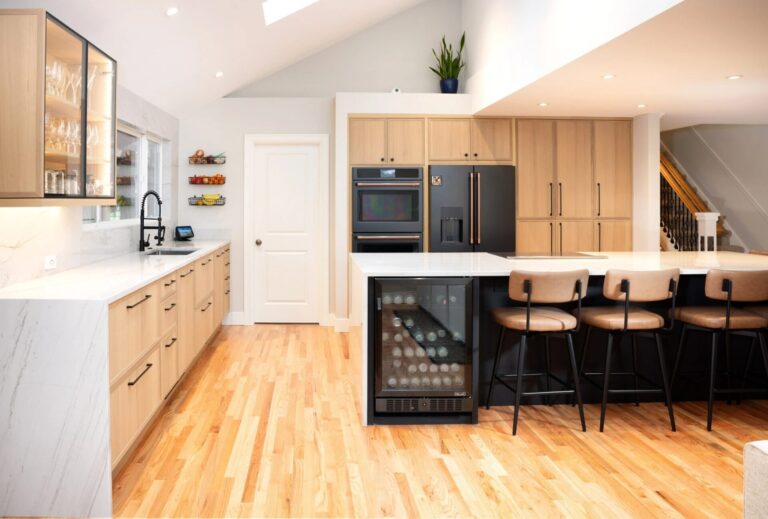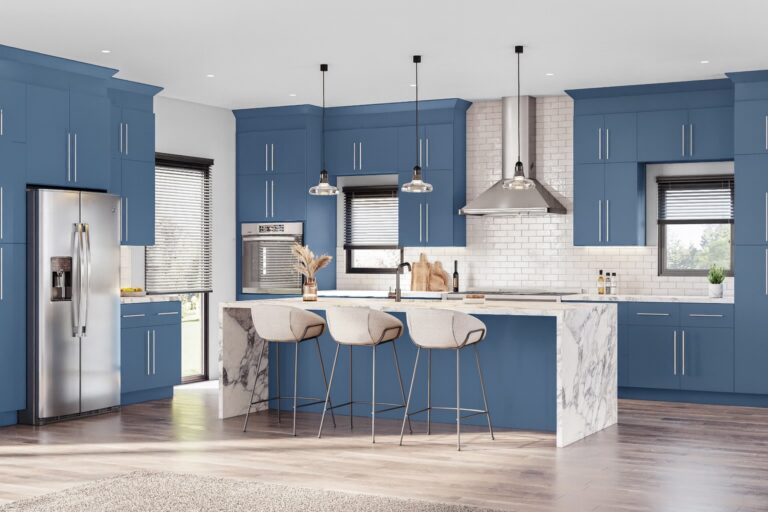The American kitchen has never been just a room. It has been a workshop, a social stage, a scientific experiment, a reflection of women’s labor, a mirror of technology, and – more recently – a quiet form of personal expression. The kitchen you stand in today, with its quartz countertops and soft-close drawers, carries the imprint of centuries of cultural shifts, economic pressure, immigration patterns, gender roles, and technological change.
To understand today’s modern remodels – from open layouts to frameless cabinetry – you have to understand where they came from. And the truth is: most of us are still living with the consequences of design decisions made 100 years ago.
This is the story of how the American kitchen became the heart of the home—and the ten surprising lessons hiding in that history.

1. The Kitchen Was Once the Most Avoided Room in the House
In early American homes, the kitchen was less a place than a problem. It was the hottest, smokiest, most hazardous corner of domestic life. Fires were common. Ventilation was poor. Food storage was unreliable. Cooking demanded constant supervision, and the room itself was tucked in the back of the house intentionally – hidden from guests and, often, from daily family life.
If you had visited a kitchen in 1900, you’d find no cabinetry as we know it today. Instead: a jumble of free-standing furniture, a table for prep, a sink if you were lucky, and an icebox. Counters didn’t “run”—they simply existed wherever something fit. That’s because the modern kitchen hadn’t been invented yet.
This is surprising fact #1:
The idea of a single, unified “kitchen room” with matching cabinets and organized workflow is barely 100 years old.
2. The First “Modern Kitchen” Came From Science, Not Design
In the 1910s and ’20s, the American kitchen became an unlikely site of scientific research. Home economists and architects began studying how women moved in the kitchen—not conceptually, but physically.
They watched:
How many steps from stove to sink?
Where do tools need to live to reduce effort?
How much counter space does one meal require?
This period gave us the first principles of efficiency and storage. It also introduced the radical idea that the kitchen should be designed as a system.
Surprising fact #2:
American kitchens were shaped more by time-and-motion studies than by interior design trends.
It was about labor, not luxury.
3. A German Architect Changed American Kitchens Forever
While the U.S. was redefining efficiency, Austrian architect Margarete Schütte-Lihotzky was designing something that would revolutionize American homes: the Frankfurt Kitchen. Compact, efficient, labeled, standardized—this “laboratory kitchen” was the blueprint for the fitted cabinetry we know today.
Drawers for flour.
Bin for bread.
Everything built in.
Surprising fact #3:
Today’s cabinets—modular sizes, interiors, drawer organization—are direct descendants of a 1926 European apartment kitchen.
Even today, frameless cabinet systems (like the ones Cabinets Core installs) trace their lineage to her early engineering.
4. Why the Sink, Stove, and Fridge Form a Triangle
The famous “work triangle” wasn’t created by Pinterest-era designers. It came from the University of Illinois School of Architecture in the 1940s, after years of research into domestic labor. The triangle was meant to reduce unnecessary motion and make kitchens smaller and more efficient for one cook.
Surprising fact #4:
The work triangle was invented for kitchens built for one person—not for the multi-cook households we have today.
This is exactly why modern remodels often shift from triangles to zones—prep, cleanup, cooking, coffee, baking—because families cook and live differently now.
5. Post-War Optimism Made the Kitchen a Status Symbol
By the 1950s, the American kitchen transformed almost overnight. Suburban housing boomed. Color flooded the home. Ads targeted women with promises of convenience and modernity. Appliances became objects of pride.
The kitchen moved from the back of the house to a more visible place, reflecting a new value: domestic performance.
Surprising fact #5:
The American obsession with “dream kitchens” was born from post-war advertising, not architecture.
This was the emotional beginning of the kitchen as a social space.
6. The 1970s Microwave Quietly Reshaped American Life
Most people think the microwave’s importance was speed—but that’s only half the story. The real shift was cultural:
- cooking became less formal
- counter space became premium real estate
- frozen and pre-made meals changed food storage
- meal prep moved toward convenience and multitasking
Surprising fact #6:
The microwave altered American kitchen planning more profoundly than the refrigerator.
It’s the reason over-the-range microwaves dominated late 20th-century layouts—and why many homeowners today ask to remove them in favor of clean, modern hoods.
7. Open Concept Was First Invented to Let Women Talk to Their Families
Frank Lloyd Wright’s earliest open kitchens weren’t about entertaining or aesthetics—they were about company. They allowed the woman of the house to cook and still participate in social life. No more tucked-away labor.
By the 1990s and 2000s, open concept became synonymous with modern living: islands, sightlines, oversized rooms, and gathering spaces.
Surprising fact #7:
The open-concept kitchen began as a feminist idea—decades before HGTV.
Today, we’re seeing a partial reversal: open, but with strategically added separation for work-from-home life.
8. The 2000s “Supersized Kitchen” Still Shapes Expectations Today
The McMansion boom produced kitchens designed for show: double islands, giant ranges, stainless everything, granite everywhere. These kitchens were less about cooking and more about signaling lifestyle. They became the home’s social engine—and Pinterest cemented that identity.
Surprising fact #8:
Many homeowners today measure their remodel against an ideal invented only 20 years ago.
Layout expectations, island size, pantry design—these are modern concepts that feel “standard” but are historically new.
9. Accessibility Completely Reframed What a Kitchen Should Be
The ADA and universal design movement of the 1990s–2010s reshaped how designers think:
- pull-out drawers instead of deep cupboards
- wider pathways
- better lighting
- adjustable heights
- safer flooring
- multi-height work surfaces
Surprising fact #9:
Many features we now call “modern” were originally accessibility innovations.
Frameless cabinetry, soft-close drawers, full-extension glides—all part of this shift.
10. The Pandemic Changed Kitchen Design Faster Than Any Previous Decade
Between 2020 and 2022, the kitchen absorbed everything: work, school, cooking, storage, stress. As homes became all-in-one spaces, kitchens had to become more flexible, more comfortable, more human.
Warm woods returned.
Closed storage made a comeback.
Pantry space exploded.
Islands became desks.
Design trended quieter, calmer, more timeless.
Surprising fact #10:
The kitchen has permanently evolved into a space for living—not just cooking.
This shift is what drives today’s remodels: thoughtful, personalized, adaptable kitchens that support how families actually function.
Why This History Matters for Homeowners Today
Understanding American kitchen history isn’t about nostalgia—it’s about making better decisions today.
When you remodel, you’re not choosing cabinets and countertops.
You’re participating in a century-long story about:
- how families live
- how we gather
- how we work
- how we store, cook, clean, connect, and unwind
Good kitchen design doesn’t start with trends.
It starts with understanding what kitchens have always been trying to solve.
At Cabinets Core, we design with that in mind: practical flow, generous storage, durable materials, and a layout that supports the real life happening in the home—not just the showroom look.
The modern American kitchen is the result of centuries of evolution.
Your remodel is the next chapter.






You must be logged in to post a comment.